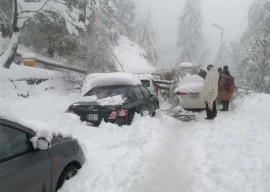
“You have time on your side,” a senior Chinese official once told me when I was the director of the World Bank’s China Operations Department. I held that position for well over seven years, from 1987 to 1994. In 1989 I steered the World Bank through what Beijing called the “Tiananmen incident”. Most of the world – certainly the United States – did not buy that description of an event that brought the Chinese army to the storied gathering place in the centre of the country’s capital. The army cleared Tiananmen of the protesters who had occupied the square for weeks. Hundreds of people were killed in the military action. The fact that I refused to buckle under the American pressure exerted on me by the officials of the administration headed by president George H W Bush brought me close to the senior leaders of China. I had discussions with them on several issues including the future of Kashmir. The quote with which I began this article was with reference to Kashmir and had a suggestion on how Pakistan should handle itself in this long-enduring dispute with India over the state of Kashmir.
The Chinese senior official in saying that time was on Pakistan’s side took a cue from his country’s history, particularly the way Beijing had handled the issue of Taiwan. In fact, before moving to take over the China department, I was the director of the International Relations Department responsible for the World Bank’s dealing with global institutions and matters not directly related to the institution’s country operations. The Bank then had begun to publish what was called the World Development Report in which it listed Taiwan as a separate country. The Chinese objected and I worked out an arrangement in which Taiwan was referred to as “Taiwan, China”. That way the Bank could include data about Taiwan in the list of economic entities on which it reported while China was satisfied that an important institution such as the World Bank was not unilaterally changing the status of Taiwan with respect to China.
“Taiwan will become a part of China,” the official continued. “Taiwan will never be an independent country. It will become part of China. That’s what it was for thousands of years and will get back into that position for thousands of years. Time is on our side; it may take five years, ten years, fifty years, a 100 years.” He felt that Kashmir was in a similar situation. It is an anomaly. It cannot be the only Muslim majority state in a predominantly Hindu India. “Kashmir will come to Pakistan for that is where it belongs. Time is on Pakistan’s side,” said the official.
The Hindu extremists who now have a dominant position in the incumbent Indian government do not realise the truth in the Chinese view. That is why they have taken the step they did on August 5 and removed the special status Kashmir had been promised and granted in 1947 when it persuaded the state’s Hindu raja to accede to India. An important component of that original contract was the ban on the acquisition of property by non-Kashmiris in Kashmir. With that provision gone, we are likely to see the repeat of the Palestinian situation in Kashmir. In the 1940’s, the Zionist movement got tens of thousands of moneyed Jews from Europe to come to Palestine and buy homes and lands from the Arabs. The Palestinians lost their overwhelming presence in the part of the geographic space that became the Jewish state of Israel. The Indians hope to repeat the Palestinian history in Kashmir. Will they succeed?
The answer is no, since the Kashmiri resistance to Indian rule has entered a new phase. In the first phase, some of the Kashmiri elite sided with India and were given senior political positions in the state’s government. That did not win the favour of the younger people in the territory. The second phase involved Pakistan’s direct involvement when it sent the seasoned, battle-hardened mujahideen who had pushed the Soviet Union out of Afghanistan. The authorities in Pakistan facilitated their move into Kashmir. India responded by militarising the region. With an estimated 650,000 to 700,000 men from the country’s armed forces in the state, Kashmir is the most militarised place on earth. Kashmir is now an occupied territory.
The third phase began on August 5 when Narendra Modi, his close associates and the BJP brought their program of “Hindunising” India. Several years ago Sunil Khilani, an Indian historian, had written a powerful book titled The Idea of India. He had concluded that India had created a powerful nation out of extreme diversity. This was done by establishing institutions that gave space to people who followed different religions, spoke different languages and belonged to different castes. Modi, encouraged by his electoral triumph in May of this year, has walked away from that idea of India. The RSS, the extremist Hindu organisation from the ranks of which Modi rose, does not subscribe to that idea of India. The followers of this non-inclusive organisation do not admit women, have no interest in working with the members of lower castes, and are hostile to Muslims. Amit Shah, the India Home Minister and the person closest to the Indian Prime Minister, once called Muslims “termites, eating away at the structure of Hindu India”. The move on Kashmir is aimed at ridding the termite infestation.
Notwithstanding, the Pakistani responses by reducing its diplomatic presence in India and by calling on several world leaders to work on India to reverse the actions it has taken are not likely to work and bring about a change of heart in New Delhi. What will work is the growing realisation on the part of the growing segment of the Indian population that the real termite is the move to create a Hindu nation out of India’s diversity. Modi is moving India towards its demise. Time is not on India’s side.
Published in The Express Tribune, August 19th, 2019.
Like Opinion & Editorial on Facebook, follow @ETOpEd on Twitter to receive all updates on all our daily pieces.




1736377795-0/Untitled-design-(58)1736377795-0-165x106.webp)













COMMENTS (1)
Comments are moderated and generally will be posted if they are on-topic and not abusive.
For more information, please see our Comments FAQ